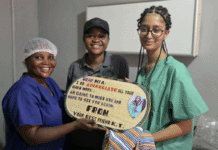When was the last time you thought about your liver?
For most women, the answer is probably never unless prompted by a lab report. And yet, this humble organ quietly performs more than 500 functions every day. It detoxifies, supports digestion, regulates hormones, balances blood sugar, and more.
A Vital Organ, Often Overlooked
Women’s health awareness campaigns have made commendable strides in areas like breast cancer, cervical screenings, and reproductive health. But when it comes to liver health, there’s a glaring blind spot in both public awareness and preventive healthcare policies.
Women face unique liver risks such as autoimmune hepatitis and primary biliary cholangitis (PBC) disproportionately affect women. Non-alcoholic fatty liver disease (NAFLD) is closely linked to obesity and insulin resistance and is becoming increasingly prevalent among women, particularly after menopause. Adding hormonal fluctuations, lifestyle stress, and even alcohol consumption, and the liver becomes an organ women can no longer afford to ignore.
ALSO READ: Rumour-around-the-closure-of-offline-classes-amidst-the-increasing
The Gender Gap in Diagnosis
Liver disease in women often shows up subtly as chronic fatigue, mild abdominal discomfort, itchy skin, or brain fog. These symptoms are frequently brushed aside as stress, hormonal shifts, or even dismissed as “just aging.”
Healthcare providers may not always suspect liver issues in women unless the signs are glaring. As a result, liver disease is frequently diagnosed late in women as it’s already progressed and treatment options become limited.
And while the focus often falls on men in the context of alcohol-related liver disease, it’s worth noting that women are biologically more susceptible to liver damage from alcohol even with lower consumption levels. This is especially concerning as social drinking and stress-related alcohol use rise among women in urban environments.
Prevention Is Possible—But Only If We Start Talking
The tragedy is that most liver diseases are preventable. And even when not entirely preventable, early detection can dramatically improve outcomes.
A simple liver function test (LFT), when included with routine blood test, can provide valuable early inputs. For women with risk factors such as obesity, diabetes, high cholesterol, or a family history of liver disease screenings should be non-negotiable. Online Courses with Certification
Online Courses with Certification
A New Health Priority
It’s time we widen the lens through which we view women’s health. A woman isn’t just her hormones or her heart. Her liver is silent, strong, and essential and deserves attention too.
Women must be empowered with the knowledge to take charge of their liver health. Because a healthy liver does more than just keep disease at bay as it ensures energy, hormonal balance, mental clarity, and overall vitality.
For information related to technology,visit: HawksCode and EasyShiksha






































































